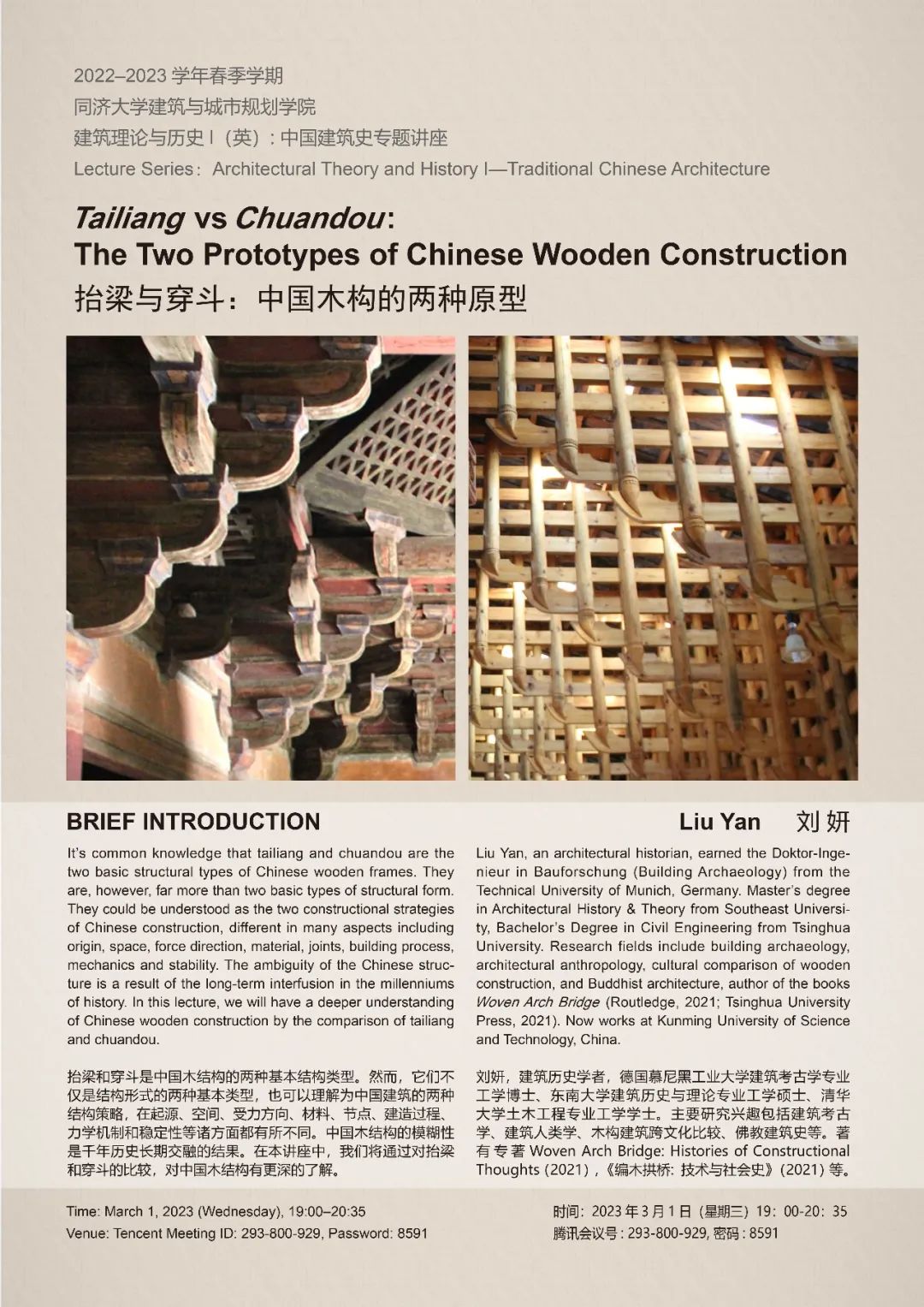
Lecture
Architectural Theory and History I:
Traditional Chinese Architecture
Tailiang vs Chuandou:
The Two Prototypes of Chinese Wooden Construction

Liu Yan
Liu Yan, an architectural historian, earned the Doktor-Ingenieur in Bauforschung (Building Archaeology) from the Technical University of Munich, Germany. Master's degree in Architectural History & Theory from Southeast University, Bachelor's Degree in Civil Engineering from Tsinghua University. Research fields include building archaeology, architectural anthropology, cultural comparison of wooden construction, and Buddhist architecture, author of the books Woven Arch Bridge (Routledge, 2021; Tsinghua University Press, 2021). Now works at Kunming University of Science and Technology, China.
It’s common knowledge that tailiang and chuandou are the two basic structural types of Chinese wooden frames. They are, however, far more than two basic types of structural form. They could be understood as the two constructional strategies of Chinese construction, different in many aspects including origin, space, force direction, material, joints, building process, mechanics and stability. The ambiguity of the Chinese structure is a result of the long-term interfusion in the millenniums of history. In this lecture, we will have a deeper understanding of Chinese wooden construction by the comparison of tailiang and chuandou.
March 1, 2023 (Wednesday), 19:00–20:35
Tencent Meeting ID: 293-800-929
Password: 8591
[1] Liu, Yan. “Joinery and Structure: Cultural and Technical Comparison between Traditional Wooden Framing Systems in East Asia and Western Europe”. Chinese Annals of History of Science and Technology 6 (1), 089–118 (2022).
[2] Klaus Zwerger. Wood and Wood Joints: Building Traditions of Europe, Japan and China. Birkhäuser; 2. Edition, 2012.
 ABOUT US
ABOUT US




